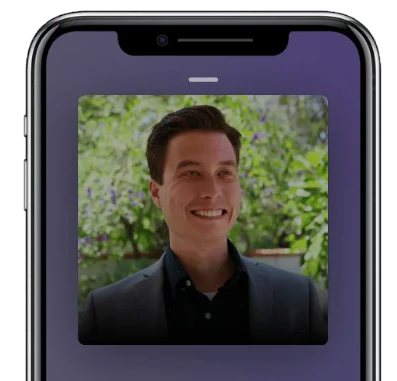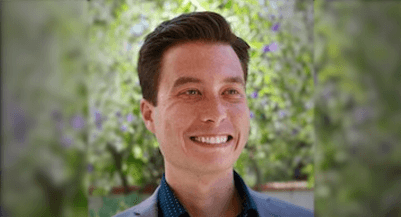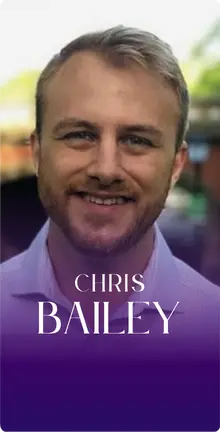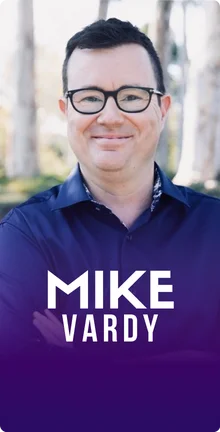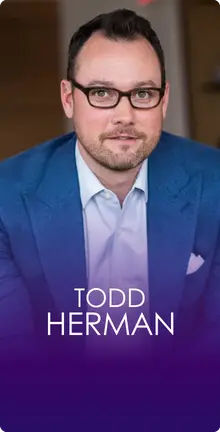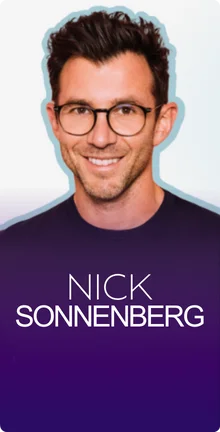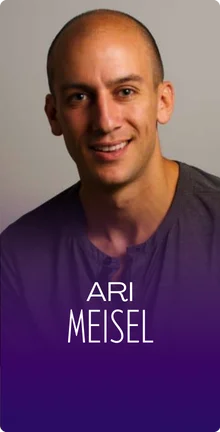Thank you much, Stephan. I appreciate it.
Let’s start by talking about this concept of building a second brain. What do you mean by that?
When I say building a second brain, what I mean is a way of using technology. It’s a way of using our devices and our apps and our machines not just as tools, but as thinking tools, as an extension of our mind, which I know sounds futuristic and sci-fi. There are a few decades of interesting research that shows that as humans, we naturally use tools and structures and environments to help us think. We’ve been doing it for millennia. What computers bring is the ability to do that faster at a much larger scale, more precisely and in formats and forms that last and stick around. It’s expanding human cognition and you could even say consciousness beyond the walls of our skull by leveraging all these incredible technologies that are coming out all the time.
What are some of these technologies and how are you using them?
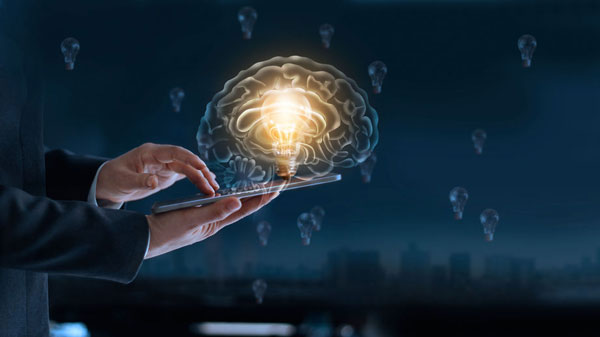
They’re mundane. Sometimes people think that they need to be investing in machine learning and artificial intelligence. We’ll get there eventually. For now, I’m advocating very simple tools, note-taking tools. The humble, non-sexy category of software called note-taking apps are the closest thing we have to a second brain. It’s something important that people already do. Look around your city, your town. Everyone is carrying Moleskine notebooks, jotting down notes on pads of paper, using the notes app on their phone to jot down some notes to self or some tasks. It’s something that we already do. My work is helping people do it in a more systematic and more effective way.
What are some of those effective ways? Give us an example of a note-taking app that you’re using on a daily basis. I’m guessing Evernote?
Evernote is my app of choice. I take care that none of the techniques that I teach are specific to Evernote’s features. I’m diving deep into Microsoft OneNote, which is a fantastic app that integrates with all the office productivity programs that Microsoft is well-known for. There’s Evernote and OneNote. There’s also a new generation of startups like Notion, Bear, Notability, Agenda and a whole crop of them that are fantastic. I recommend any one of them. Anyone of them is perfectly capable of functioning as your second brain.
Would an app that is more of a GTD-based to-do application also count? For example with Evernote, I’m not into that even though I’ve got it installed. I got an account and I have some notes in there. I always dump stuff out of my brain into an app called Things, which is from Cultured Code. I set it up in a GTD, Getting Things Done manner. I haven’t transitioned to putting half of the stuff into Evernote if it’s note-taking and then the things that are more Next Actions and Someday maybe is going into Things. Some people prefer OmniFocus. What’s your take on that?
I’m in favor of that app as well. In fact, my first course was on the GTD method. I taught thousands of people how to use GTD, how to use task managers. Things is the app that I use as well, so we have that in common. My fundamental belief is that is that you need a separation between actionable information and non-actionable or reference information. This is even part of GTD. David Allen talks about you need a firm, a barrier, a wall between things you have to do, actionable and things that are just content. They’re informative, they’re interesting, insightful, but it’s not something that you have to take action on. I use Things every day. I use it all day long. I’m reading a book called Glut, which is a history of information science and information technology. My excerpts, my highlights from that book are probably going to be 20 or 30 pages. No task manager that I know of has a scalable way to save that size of the content. That’s where notes apps do well. They’re completely focused on content management, completely focused on saving ideas and texts and images and attachments.
Do you go back to these twenty pages of notes and you extract out the potential Next Actions and then load those into Things? Do they get dumped out of your brain and the processing that you’ve done of that book and the reading of it and you never go back to that again unless you’re doing a search for something related?
It’s both. What I advocate people do is to think of it like stitching together your actionable and your reference systems. A simple little task in Things that says, “Review book notes and write a blog post.” It’s one sentence, but then in the notes section of Things, which is a little comments section, I’ll have an Evernote link. I know if I click that link, it will take me straight to that exact note in Evernote where I then have all of the book notes that I can summarize in bold and highlights and vice versa. Things came out with external links for Things tasks. It’s not a well-known feature, but for the first time, you can have a link in Evernote that takes you to a Things task. You have these two separate systems that have a clear separation. At the same time, you have all these trails and all these little strings crisscrossing back and forth for when you need to find the task associated with some notes or some notes associated with the task.
There’s probably a similar feature in some of these other action-based GTD type of apps like OmniFocus. I don’t use OmniFocus, but I’ve heard good things about it. It got a lot of features apparently. Give me a sense for how big your database of ideas and references and so forth is. How many notes do you have in Evernote? How many Next Actions do you have in Things?
There’s not an easy way that I know of to keep count of those. I don’t see any running totals. Some are prolific, open-loop capturer, meaning that I don’t decide whether or not I’m going to do something before capturing it. I capture and then figure it out later.
I dump everything out of my brain. I think it was David Allen who said this quote, “Your brain is not a warehouse. It’s a factory.”
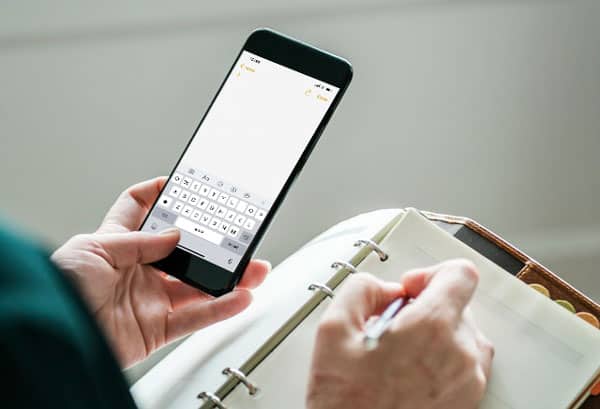
It sounds like something he said.
It’s powerful. Get those ideas and then the actions you have to do, the grocery list and all that. Get that out of your head, write it down, put it into a trusted system and stop trying to keep it in your head. It’s such a waste of those beautiful, powerful, little gray cells.
I have I’d imagine close to 1,000 tasks, guessing off-hand. 60% or 70% of those I’d say are in Someday Maybe. They’re basically ideas. I have different tags for different priorities: high, medium, low. 5% to 10% I’d say are high or medium. I’m purposefully looking only at the tiptop of the iceberg because if I had to look at the whole iceberg, I would instantly be totally overwhelmed and have a meltdown.
My Things database is not that well-organized. A lot of my items, I haven’t gone back and processed properly. They don’t have tags associated with them. There are way too many things in Next Actions in my Today category. It’s overwhelming and stressful. I got to clean that up. It’s an insurmountable task though. It’s probably going to take me 40 hours to go through because I have probably 5,000 Next Actions. I’m super prolific with ideas and things that I could be doing and supposedly should be doing. I love what Marshall Rosenberg, the creator of Nonviolent Communication, says about the word should, “It’s the most violent word in the English language.” Theoretically, I would go back and clean all that up, but I have not found the time to do it.
I have around 5,000 notes in Evernote. How I’m using Evernote, which is random little ideas, little websites I might want to visit, books I might want to read and notes from articles or books that I’ve read, checklists, templates, all things. I’m doing in Evernote what you do in Things.
The trajectories of our lives are influenced by the little moments where we make decisions to either create value or to just pass the time. Share on XI’ve been getting some coaching from Mike Vardy. He’s a great guy. He has become a good friend. He’s the Productivityist and he has given me some amazing coaching. Check out his show, The Productivityist and the episode where I interviewed him on this show. It’s been very helpful to start the cleanup process with Things because that is my trusted system. That’s my go-to for everything that is outside of my head, like the second brain. It’s long ways from where I’d like it to be. We’re working on it and he did coach me on pulling stuff out that are non-actionable things and putting them into Evernote. Have you been on Mike’s show or vice versa?
I haven’t. A lot of people told me I should reach out to him. It’s one of those open loops that have been in my Things.
If you could explain some of the most valuable concepts from your standpoint of GTD? I’ve had a whole episode on GTD. I had David Allen on the show. What are the core concepts for you that have made it life-changing? It’s been life-changing for me. I’m assuming it’s been life-changing for you. Share a bit about GTD for our audience.
I’ve been deep in the world of GTD like you. It was life-changing. I love the Peace Corps where I served for a few years in Eastern Ukraine. I had the most idyllic, slow-moving life you can imagine. I dropped myself in the middle of Silicon Valley trying one to the other and was drowning almost instantly. It’s the usual insane number of emails and text messages and Slack messages and all these different things. I went to the bookstore and said, “What’s your bestselling book on productivity?” and there it was. My first course, which I still have and it still sells well, is called Get Stuff Done Like A Boss. It’s a video-based, step-by-step walkthrough of how to set up GTDs using Things on the Mac and Todoist on the PC. What I would say I took away and it’s interesting seeing how GTD is evolving and changing as technology changes. It’s this idea that knowledge work can be boiled down into a series of quite low-level, almost mundane clerical tasks such as in GTD capture, clarify, organize, review and execute.
Every day you’re in the office with no idea what you’re going to start doing. What the order of operations is? What comes before what? You’re spending too many of your precious brain cycles, too much of your precious creativity doing random administrative tasks. You’re not going to have enough cycles leftover for creative, challenging work. It’s distilling what are the fundamental steps or the fundamental activities and knowledge work. First of all, it’s habits. Doing them regularly, doing them systematically. Following a checklist, so you improve, you get better over time. The third is doing them asynchronously. Doing them in the little gaps and the little random spots in your day where you don’t have anything else scheduled so that your work is being continuously captured, clarified, organized, reviewed and executed. On that topic, what I’m trying to do with my work with building a second brain is exactly that. What GTD has done for actionable information, I am trying to do that for non-action, world reference information.
That’s in your Building a Second Brain course system?
Building a Second Brain is an online course. You can find out more information at BuildingASecondBrain.com.
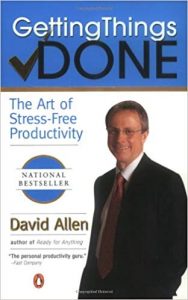
It’s been life-changing for me going through the Getting Things Done book and then going to David’s workshop on GTD. It’s life-changing and amazing. It’s easy to adopt some of these principles. If the task is going to take two minutes or less, do the task while you’re processing it. That has saved me so much headache and many unnecessary open loops. The terminology that he gives to things that I was not able to explain or express while the open loops concepts, Some Day Maybes, Next Actions versus Projects. It’s simple to take something that you’re looking at that looks a little onerous to complete and realize, “This is not a task. This is not a Next Action,” and that’s his terminology. “This is a Project because it’s more than one action.” It’s freeing. To apply context like, “This is something that I can only do when I’m at my computer. This is something I can only do if I’m able to make a phone call or if I’m out doing errands.” I don’t have to look at my huge to-do list. I can look at the things filtered by context that are errands if I’m out and about and I want to kill two birds with one stone.
I’ve read the GTD book multiple times. I’ve come to a new appreciation of how incredibly difficult it is to boil and method down to such simple terms and such simple rules of thumb. In some ways, I have almost a greater challenge because, with tasks, it’s one line. It’s one sentence. You can categorize it in four to eight different contexts. I’m in the realm of informative information. It’s just information, it’s knowledge. What I’ve found is it can take many forms. A checklist is a form of knowledge. A clipping of a webpage with some of your annotations is knowledge. It has a stunning diversity of forms that it takes. The method I’ve had to develop is in some ways more open-ended, it’s broader. For example, it has three steps instead of five.
I’m glad that you went through that effort for everybody’s benefit including mine. The course is, for many people, an easier way to learn. If you learn by doing, it’s more experiential than just reading a book, which tends to be more passive unless you do take notes while you’re reading. Many people don’t do that. They’re passively either reading through their eyes or they’re listening to the audiobook, but driving or working out at the gym and they don’t take a single note, listening to podcasts the same way. We’re hundreds of episodes in between my two shows. The other one is Marketing Speak and there are almost as many episodes there too. I pour my heart and soul into those and then people listen to them like they’re listening to NPR or something. There are millions of dollars of hacks, tips and tricks and strategies in these episodes and you’re passively listening to them.
That’s a big part of my message too is take notes. There’s this idea that taking notes is in the taking like, “I’ll remember them better. I’ll absorb them better.” That’s true. It’s better than nothing, but I’m of the opinion that those notes are of long-term potential value. It could be some time, it could be weeks or months or years before you need them. The level of information consumption these days is truly absurd. We spend eleven hours per day consuming media as some studies showed. I don’t know about you, but I’m totally a part of this. If I’m doing a chore or running an errand, I’m on my podcast. I have my AirPods. I’m in the car listening to whatever it is. We’re consuming information most of our waking hours.
We’re snacking on information. It’s a powerful distinction. If you are consuming information in a snacking way like you’re scrolling through Instagram or something, that is low-level and that’s the activity that you’re going to be replaced. That part of your life and job is going to be replaced by robots fast. Whereas if you’re doing creative knowledge work, if you’re listening to a podcast, extracting out ideas and figuring out ways to morph them into something that is applicable for your industry and your company and the interesting things that you’re doing. That’s much more high-level and harder for a robot to replace you.
What I found with my students in my online courses is that once they have that system, they have a way to systematically capture the insights and the ideas from whatever they’re consuming. To organize it in a practical simple system and then to retrieve and share it, they dramatically shift their information consumption, whereas before they would spend more time on social media or snacking. Suddenly they go, “I can make use of every minute,” therefore every minute counts. It’s not like critical learning. It’s not this rarified big thing you do only in libraries and universities and courses. Every little minute of the day, if you have a way to ingest and save the best little bits of what you’re learning, suddenly you see opportunities everywhere. This is related to GTD, those fifteen minutes at the doctor’s office. Instead of being on Instagram, maybe you’re on Instapaper and reading an online article. That then gives you a marketing idea that the next day you implement in your business and then leads to this incredible new outcome. The trajectories of our lives are influenced by these little moments where we make decisions to add value or create value on one hand or to pass the time.
Allow yourself to dream or to consider the possibility that no one is keeping you from where you are except yourself. Share on XAnother concept that dovetails nicely with what you’re saying, I learned this from Ephraim Olschewski and he’s been on this show as well and on Marketing Speak. Both episodes are incredible. This guy charges $100,000 a year, paid up front to get coaching from him an hour a week. He’s got a full schedule. He’s making an insane amount of money. It’s well into the seven figures, I don’t know how much into the seven figures. He does quite well for himself and he delivers so much value for his clients that they happily pay that and renew year-after-year. This was one thing I learned from Ephraim that was powerful. If you are intentional in everything that you do, you have no downtime anymore. It might sound daunting or not fun, but it’s incredibly empowering.
If you think that you have downtime and you’re going to sit in front of the TV and watch some Netflix, you’re not living an intentional life. You’re just taking up space. If on the other hand, every moment is an opportunity for you to be intentional and that’s what you’re going to do is be intentional. You go to a family reunion, there’s no way you’re going to show up and hang out and enjoy yourself. You’re going to go there with a powerful intention to reconnect with a family member that you’ve lost touch with or that it’s awkward to say, “I love you too,” or whatever. You’re going to handle that because that was part of your intention for coming to that family reunion. It’s powerful.
I love that framing of intention. In your example, this was the case as well. It can be applied to rest and family and self-care and all those things just as easily.
Self-care is something that a lot of people compartmentalize into a separate area and then they give short shrift to. You might skip a meal or eat your lunch at your desk because you feel overwhelmed with the work that you have to get done for the day. I’ve been guilty of that myself. By compartmentalizing the self-care into a separate area that you can give short shrift to, whereas your job or your business you don’t want to do that with. It’s all part of your life. These are spokes on the wheel and not dealing with some of them appropriately is going to leave you with a faulty wheel. You’re going to eventually break.
I’m doing a co-working vacation. I am here with my fiancée, Lauren. We both work remotely. We’re spending some time in Mexico City. It’s interesting because I don’t have a cell phone plan here. My phone is on airplane mode all the time and I only have internet access when I am at cafes or in the co-working space. It’s been fascinating because first, my productivity definitely has not decreased. In fact, it’s increased because I’m intentionally online. Instead of being online all the time and always having this drip feed of information, I have these defined periods and places at the co-working space or the café where I’m online. I find that a few things have happened. One, I’ve been looking at my Screen Time widget on iOS where it tells you how much time and it’s down to an hour a day before it was four or five hours. I spend a lot of time on my devices. That screen time is way down. I find that I’m sleeping better. I’m calmer, less agitated, not getting the craziest news of the hour delivered to my brain instantaneously, 24/7. I find that I’ve been much more social. The time that we’ve been here, we’ve hung out with mostly new friends; people we’re meeting through mutual friends or through Twitter. I’ve been more social than ever. It’s because instead of getting this low-quality social connection on social media, where you like a photo or you share something. You’re getting a little bit of connection.
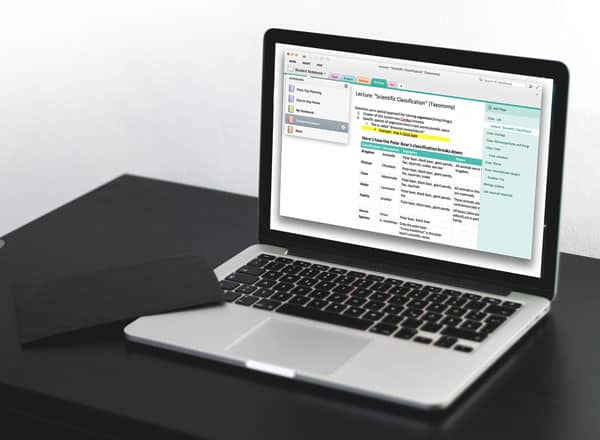
A little bit of dopamine.
You can go a long time settling for that, which is a bit sad. Instead of that, I leave work and I go, “I’ve done the work. Let me call someone and spend time with them.” It’s been one of the greatest hacks of my life is not having a cell phone plan.
Do you have the Facebook app on your phone still and the LinkedIn app and all? Have you removed those from your phone?
I don’t have the apps, although I use Twitter on my mobile browser. It’s the same thing with Facebook. I do quite a bit of business on those. For example, in Latin America, Facebook is a business tool. People are likely to message you on Messenger as to email you. I can’t shut down the account. Also the ads and different things. Without the internet, it doesn’t matter.
Do you do that all the time? Keep your phone in airplane mode when you’re not on co-working vacation but it’s a regular day?
The best way to change your behavior is not the frontal attack because your fixation on the goal makes the goal impossible to achieve. Share on XHere, I don’t have a choice. What I’m thinking of doing is I have AT&T and if I turn on roaming and turns off airplane mode, it will allow me to connect but it will charge me $10, which is ₱200. ₱200 is a couple of good meals. The reason we’re here in Mexico City is we’re moving here permanently. This is a scouting trip to get the lay of the land. I’m seriously considering, especially after talking to you, of never getting a cell phone plan. Always having airplane mode with the backup system, if there’s an emergency or if I’m meeting someone or I truly need to connect. I can flip off airplane mode and get charged ₱200 or $10, but then I have an accountability tool there.
It’s almost like that serves as a Pavlok if you know what that device is. You tell it to zap you, like having a rubber band around your wrist and you snap the rubber band if you’re going to cheat and have a cigarette or something like that if you’re trying to stop smoking. That’s your Pavlok, instead of getting an electric shock, you’re getting a ₱200 hit. It’s beneficial to your health to keep your phone in airplane mode. I learned this from Dr. Mercola and from other health experts who specialize in EMFs, electromagnetic fields, and the destructive impact the EMFs have like Wi-Fi signals and cellular signals on our health. They disrupt the cellular membranes and the communication channels and it’s not good for you. If you can turn off your Wi-Fi at night, unplug the router before you go to sleep. Maybe even consider painting the bedroom walls with special EMF-blocking paint so you don’t get doused with other people’s EMFs that are infiltrating your bedroom. These are some of the things that you could do.
I have a whole episode dedicated to EMFs and health and how to mitigate all that exposure. We cover that in-depth in the episode with Brian Hoyer, who’s an EMF expert. He goes and does these in-home assessments, finds all the exposures, comes in with these meters and figures out the degree of exposure that you’re getting and how to ameliorate the situation. Mercola.com is one of the go-to places on the internet for health information. It’s like WebMD. It’s a very popular website. He’s a big figure in the world of health and longevity and biohacking. In fact, he was a keynote presenter at the last Bulletproof Biohacking Conference if you’re familiar with Dave Asprey. Dave Asprey has been on this show and that was an incredible episode. There is this interesting thing that happened after Dr. Mercola got off stage and then he got mobbed by people. He made this announcement and this is in the hallway that nobody comes near him with their phone in anything but airplane mode.
There were probably 30, 40 people surrounding him wanting to ask questions and listening to his answers to other people’s questions. He made sure that nobody was dousing him with EMFs from their phones as they were crowding around him. I thought, “I should take this seriously,” when I saw that. You’re going to relocate permanently to Mexico City and you’re on this reconnaissance trip or recce as New Zealanders like to say. I did something similar. I went to live in New Zealand for eight years and it was incredible. The place is a paradise. I came back and sold my business within a couple of years because it was a US-based business and realized I needed to be back in the US in order to have a successful exit. I was able to run a US-based business from halfway around the world in New Zealand and have a team in New Zealand and a team in the US. It is possible to do this internet thing from anywhere. I tested the theory and it works.
I applied for residency before even ever stepping foot in the country. I had no idea what it was going to be like. I’m like, “I have this intuition that I should go live in New Zealand.” I convinced my wife at the time and my kids that they should do it too. We all picked up our whole lives and then moved halfway around the world. Two weeks before the big move, I did a quick recce to find a place to live, a neighborhood and a house that was furnished to rent and all that. It’s totally amazing and good luck with that big move. If you do these things where you don’t go for a couple of weeks, you’ll go somewhere for several months. I spent a few months in Tel Aviv with my wife and it was amazing. We were able to travel around Europe a bit as well because everything was so much closer. I live in LA in Santa Monica normally and it’s doable. It might sound impossible for people, but if you’ve got your own business or you’ve got the ability to tell your boss that you’re going to work remotely from somewhere and for them not to fire you, you should totally do it.
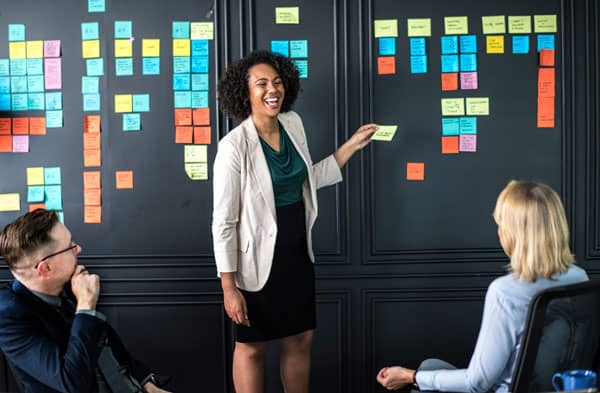
This is what I’m discovering. It’s blowing my mind. I have a series on my blog. It’s called Going Nomad. If you go to Praxis.ForteLabs.co, which is my blog, you can also get there from my main website which is ForteLabs.co. There are only a couple of posts in the series so far, but I’ll be adding many more. What I’m doing is I’m trying to deconstruct all the moving parts, the finances, the logistics, the airline miles, how you stay in touch with friends and family, all the parts of being a digital nomad now. What I’ve found so far is it’s eminently feasible. From every point of view, financially, professionally, business-wise that I’m coming to the conclusion and I’d be curious to hear your thoughts too. I feel it’s a mindset shift. The primary, the last remaining barrier is the shift in mindset to allow yourself to dream or allow yourself to consider the possibility that no one is keeping you where you are except yourself.
It is a mindset shift. Much of life is a mindset shift. People have this goal to go from six figures a year in income to seven figures a year. They think that “This is going to change my life,” and then they’re disappointed because they don’t feel any different. When I hit that, I’m like, “That’s cool. I should have celebrated more when I hit it, but whatever. That’s water under the bridge.” What I did find is that I had a different mindset. As a seven-figure earner, you show up differently in the world and you consider yourself up here with other people who are seven-figure earners and not a try hard or almost there person. Maybe they’re making twice as much as you, but it doesn’t matter because you’re a new person. You’re a seven-figure earner. That’s a mindset shift that you could have had earlier.
People wait to have an external circumstance to make them happy, instead, they could choose to be happy as if they had that thing or that circumstance and then that would attract the circumstance to them. They don’t think to do that. They wait for the circumstance to change their brain chemistry. It doesn’t make sense to me anymore. It did earlier before I had these distinctions. If you get nothing else out of this episode, having that you can adopt mindsets without having the external situation take you there. You can make a choice and practice that new habit and make that part of your identity and you attract all of these different things that would have come after you achieved that seemingly insurmountable goal.
I work quite a bit in behavior change, how to change people’s behavior. There’s this principle that is conditional, which is that the context is decisive. The best way to change your behavior is not the frontal attack. Not the rev up your motivation and your self-discipline, your determination because it’s almost like your fixation on the goal makes the goal impossible to achieve. When it comes to financial goals, you want to fix it on the goal. When it comes to behavior change, it’s a little more intuitive and subconscious. The context around the behavior, it’s not the fact that you’re eating a cookie every night. It’s like, “What is the environment? What is the state of mind you’re in? What is the actual physical environment? What happened before? What happened after? What happens during? Look at that context, which is much easier to change.
It's a challenge to move to a new place, especially a new country, but you have this chance to reinvent yourself into who you want to be. Share on XI moved a bunch of times in my life. I lived in Brazil, Colombia, Ukraine and now in Mexico. It’s weird, all of these little bad habits and things that I want to change about myself, but feel completely intractable while I’m living in the same place. When I moved, suddenly it’s like I can honestly read them myself. I can choose from a menu to a certain degree, who I’d like to be because all of my triggers and hooks and anchors have been completely unmoored. It can be disorienting. It’s a challenge to move to a new place, especially a new country. You have the chance to reinvent yourself as who you want to be, which is pretty phenomenal.
Yet, we artificially put up these barriers that they don’t exist. I would tell people, “I live in New Zealand.” They’re like, “That’s amazing. I wish I could do that.” I’m like, “You could.” They’re like, “You know I can’t because I’ve got X, Y and Z,” and then they go through some story about how they worked hard to get to their job that they’re in or they’ve got family nearby or whatever. They put themselves into this cage and nobody put them in that except them. What you say about the habits and identifying the context, that reminds me of something I read in Asian Efficiency. It’s a great resource. I learned about the three components of habit. You’ve got the stimulus or trigger, there’s the habit itself and then there’s the reward.
If you attack that context and let’s say that you have this bad habit of every time you sit on the couch you reach for the remote and you turn on the TV. What if you took that remote and you put it in the bedroom in a drawer somewhere and you replaced it by the couch with a book that you’re in the middle of reading and enjoying. That stimulus of sitting down on the couch that triggers you to reach for the remote gets you to reach for the book instead. Now you’ve scrambled that habit. The reward that you get isn’t the dopamine from watching some Netflix show, but from continuing that amazing book that you’re in the middle of.
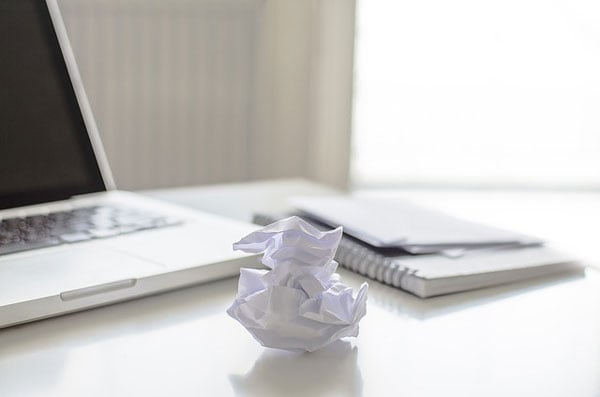
You can shift your information consumption habits. I’ve been researching this and there’s this fascinating thing where our behavior online is oriented towards the public and towards the new. We don’t think to question this. What you do with the defaults on-ramp to the internet is you login to your various sites and networks and you see what’s new. There’s a different way of interacting with the web and with information in general, which is instead of on the public and the new, you focus on the private and on the timeless. That’s what I’m trying to do with knowledge management. There’s this principle of aging your money. You shouldn’t have a dollar come in the door and immediately spending it. That’s living paycheck to paycheck. You should age your money. There should be as much time as possible from the moment you earned to the moment you spend a given dollar. What I’m trying to have people do is to think of knowledge that way. Age their knowledge.
A couple of years ago, I wrote a post called The Secret Power Of ‘Read It Later’ Apps, which was one of my most popular posts of all time. I made a rule for myself. I said, “I’m not allowed to read anything immediately. I only allow it to save it to my Read It Later app, which is Instapaper. You can also use Pocket, it’s an equivalent. What I would find is coming back to those articles, sometimes hours later. Often, I would save reading for the evening. Probably half of them at least, once with the perspective of a few hours or days or even weeks, I’ll go, “Why in the world did I want to read this?” It was in the moment where perhaps I was procrastinating on a task and that article about the latest controversy of some celebrity seemed attractive. That was because of my state of mind and my body state. When I am grounded and have perspective, I see that what I want to read is long-form. I want to read books. I want to read long-form articles. I want to read in-depth blog posts. That is not something that your brain naturally prioritizes at the moment. You almost have to add a little bit of friction to your reading habits so that you’re re-biased towards longer-form things.
The friction that you have throughout the day of being in airplane mode also helps you to be more discerning in that way. This dovetails nicely with another concept I’ve learned, which is will willpower is a finite resource and it gets depleted over the course of the day. If you keep that jar of cookies out and you keep walking past it every 30 minutes, you’re resisting and resisting. Eventually, you wear down that finite resource of willpower and you’ll give in. More importantly, the stuff that matters like, “I was going to work on this big project,” eat the frog as Brian Tracy says. I didn’t end up doing it because I ended up minoring in the majors and majoring in the minors. It’s a real waste of life and brainpower.
Be wise and deliberate about your use of willpower. Throw the cookies out and don’t waste any willpower on that. Prioritize the stuff like the biggest frogs you got to swallow from Eat That Frog! book. Do it in the morning and don’t check email first thing. Never ever check email first thing. It’s a terrible habit. Live by this concept of the low information diet as Tim Ferriss likes to say. Another great episode on my show is the Tim Ferriss episode. Let’s move into a lightning round. What are some of the other favorite tools that you use that we haven’t discussed yet?
One app I enjoy is called HoursTracker. It’s an iOS app used for tracking time. I find the extra bit of friction to have to clock into a project or an activity and then clock out bills my awareness and helps me make more intentional decisions. For my calendar app, I use BusyCal, which I quite like.

Do you use Moment, the app for tracking your usage of different apps and your overall time on your devices?
I don’t.
There are a bunch of capabilities already in the latest version of iOS as far as tracking your usage of apps and total screen time, but Moment can also send you reminders if you get the pro version. It’ll help you to do a digital detox and wean yourself off of your phone, which is pretty cool. That’s the Moment app. Do you use RescueTime?
I have in the past, but I prefer having to clock in and out manually. It gives me that extra bit of awareness. One thing I’ve been experimenting with is Siri Shortcuts. Someone shared on Twitter you can setup Siri Shortcuts so that whatever you copy to the clipboard, you can ask Siri to read it and she’ll read it out loud. It requires a little bit of setup. Siri Shortcuts are these mini little tasks that you program so there are a few things you have to do. I find sometimes there’s an article that I’m casually interested in while I’m doing chores. I’ll select all, copy and say, “Siri, read the text,” and then she’ll read it to me.
Another little hack is that you can set your iPhone on triple click to go into grayscale mode and then triple-click again it goes back into regular full color. If you keep your phone on grayscale mode, then you’ll use it less. I learned this from Tristan Harris, who’s a big proponent of detoxing off of your devices. Where can we send the audience to consume your awesome courses and all that stuff?
It’s been a real pleasure. The home base for everything is my website, ForteLabs.co. That will lead people to my eBooks, to my courses, to my blog, my subscription, membership program, and various other things. You can find everything there.
Specifically for Building a Second Brain, you’ve got BuildingASecondBrain.com for the online course.
BuildingASecondBrain.com is the home base specifically for knowledge management and note-taking work.
Thank you so much, Tiago. Thank you to our audience. Take some action. Hopefully, you took some notes from this episode. This is your host, Stephan Spencer, signing off.
Links and Resources
- Tiago Forte
- Twitter – Tiago Forte
- Facebook – Tiago Forte
- Instagram – Tiago Forte
- LinkedIn – Tiago Forte
- Youtube – Tiago Forte
- Get Stuff Done Like A Boss – blog post
- The 5 Challenges of Becoming a Digital Nomad – blog post
- The Secret Power Of ‘Read It Later’ Apps – blog post
- ForteLabs’ courses
- Tiago Forte’s blog
- Glut
- Getting Things Done
- Eat That Frog!
- Tim Ferriss – previous episode
- Chris Bailey – previous episode
- Todd Herman – previous episode
- Nick Sonnenberg – previous episode
- Mike Vardy – previous episode
- Ari Meisel – previous episode
- David Allen – previous episode
- Ephraim Olschewski – previous episode
- Brian Hoyer – previous episode
- Dave Asprey – previous episode
- Ephraim Olschewski – MS previous episode
- Productivity – GYO Tab
- Podcast – GYO Tab
- Marketing Speak
- Evernote
- Microsoft OneNote
- Notion
- Bear
- Notability
- Agenda
- Things – App
- OmniFocus
- The Productivityist – Podcast
- Pavlok
- Mercola.com
- Instapaper
- HoursTracker
- BusyCal
- Moment
- RescueTime
- BuildingASecondBrain.com
- Nonviolent Communication
- Todoist

